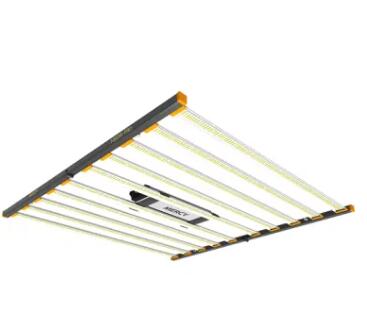What are the primary advantages of using LED grow lights for indoor plant cultivation
2023-10-30
Using LED (Light Emitting Diode) grow lights for indoor plant cultivation offers several advantages compared to traditional lighting sources. Here are the primary benefits of using LED grow lights:
1. Energy Efficiency: LED grow lights are highly energy-efficient, converting a significant portion of electrical energy into usable light for plants. This efficiency reduces energy costs and is environmentally friendly.
2. Reduced Heat Emission: LED grow lights produce minimal heat compared to traditional lighting sources like incandescent or high-intensity discharge (HID) lamps. Lower heat output reduces the risk of heat stress or damage to plants and simplifies temperature control in indoor growing environments.
3. Long Lifespan: LED diodes have a longer lifespan, typically ranging from 50,000 to 100,000 hours or more. This longevity minimizes the need for frequent replacement of light fixtures, reducing maintenance costs and ensuring consistent light quality.
4. Customizable Spectrum: LED grow lights can be customized to provide specific wavelengths of light tailored to the needs of different plant species and growth stages. This customization allows growers to optimize their lighting for maximum growth and yield.
5. Precise Light Control: LED grow lights offer precise control over light intensity and duration. Growers can adjust the light output to meet the specific requirements of different plant varieties and growth stages.
6. Low Environmental Impact: The energy efficiency of LED grow lights reduces energy consumption and, consequently, the carbon footprint associated with indoor agriculture. This makes LED lighting a more environmentally sustainable choice.
7. Compact and Lightweight Design: LED grow lights are often compact and lightweight, making them easy to install and adjust in various indoor gardening setups, including grow tents, vertical farms, and hydroponic systems.
8. Minimal Light Pollution: The directional nature of LED light emissions minimizes light spillage and light pollution, making them suitable for urban farming and areas where precise light control is essential.
9. Reduced Cooling Costs: Since LED grow lights emit less heat, there is a reduced need for elaborate cooling systems, further saving on energy and operating costs.
10. Versatility: LED grow lights are suitable for a wide range of plant types, including vegetables, herbs, flowers, and ornamental plants. They can be used in various indoor growing environments, such as grow rooms, greenhouses, and urban farming applications.
11. Remote Monitoring and Control: Many LED grow lights are equipped with digital interfaces that allow for remote monitoring and control, enabling growers to manage their lighting systems from a distance.
12. Long-Term Cost Savings: Although LED grow lights may have a higher upfront cost than some traditional lighting options, their energy efficiency, long lifespan, and reduced maintenance expenses often result in significant long-term cost savings.
13. Enhanced Plant Growth: By providing the ideal light spectrum and intensity for photosynthesis, LED grow lights can lead to enhanced plant growth, increased yields, improved flavor and aroma in edible crops, and shorter growth cycles.
14. Reduced Risk of Pests and Disease: Indoor growing environments using LED grow lights are often more controlled and isolated from outdoor pests and diseases, reducing the need for pesticides and chemicals.
15. Year-Round Cultivation: LED grow lights allow for year-round cultivation, making it possible to grow plants in any season and climate.
Overall, the advantages of LED grow lights make them a popular choice for indoor plant cultivation, whether for hobbyist gardeners or commercial growers looking to maximize productivity while minimizing energy and environmental impact.



